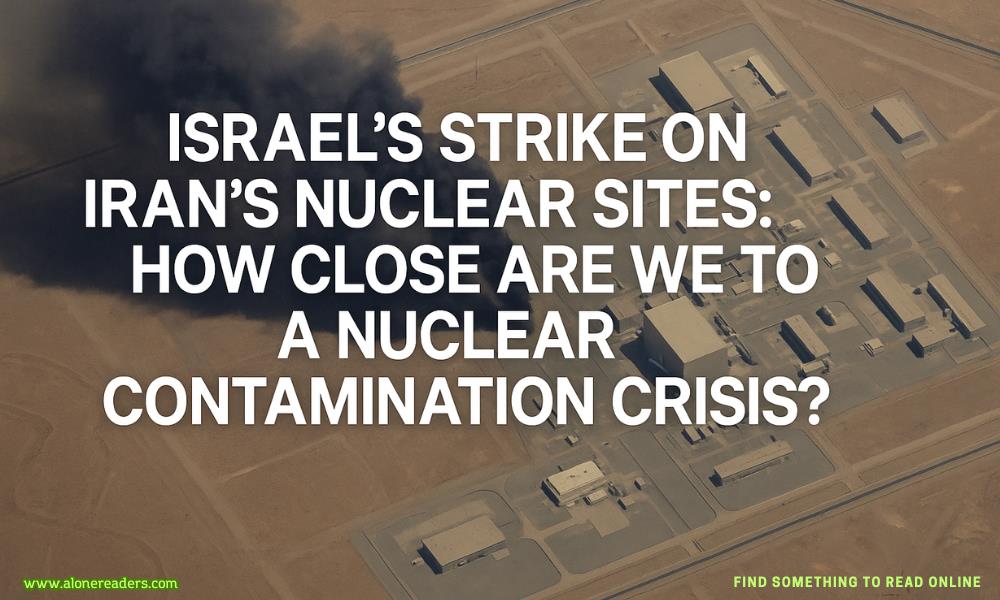
The world woke up to a grim reality in June 2025 as Israel launched unprecedented airstrikes on Iran’s nuclear infrastructure, reigniting fears of a potential radiological disaster. The targeted facilities—most notably Natanz and Isfahan—hold critical uranium enrichment infrastructure. While immediate radiation levels remained within normal parameters, experts now warn that these strikes may have opened a dangerous new chapter in the geopolitics of nuclear risk.
The Natanz Attack: Surface Damage, Deep Consequences
On June 13, Israel launched direct strikes on Natanz, Iran’s most prominent nuclear enrichment facility. Though the underground centrifuge plant remained physically intact, the attack cut power to the entire facility. According to IAEA Director General Rafael Grossi, the loss of electricity risks damaging centrifuges housing uranium hexafluoride gas—a compound both chemically corrosive and radiologically dangerous.
Isfahan Targeted Too
Another Iranian nuclear site in Isfahan was also struck. Details remain scarce, but both locations are key parts of Iran’s nuclear fuel cycle. The full extent of the damage remains unknown due to Iran’s limited transparency and the restricted access granted to international inspectors.
IAEA Response: Warning of Radiological and Chemical Risks
In an emergency session in Vienna, Grossi emphasized that any further escalation could trigger “a radiological release.” While surface radiation levels currently show no spike, the IAEA urgently requested updated technical data from Tehran. Without consistent monitoring, there’s no reliable way to assess the extent of chemical or radioactive leakage, putting both environmental safety and public health at risk.
What Makes It So Dangerous?
The primary concern centers around uranium hexafluoride (UF6), a compound used to feed gas centrifuges for uranium enrichment. UF6 is highly reactive with water—including atmospheric moisture—and can rapidly form hydrofluoric acid, a substance that causes severe chemical burns and is lethal when inhaled in even small quantities.
Power Loss = Risk Amplification
Centrifuges require constant power to function safely. Without electricity, they may malfunction or crack, releasing UF6 into the containment environment. While Iran claims the underground facilities remain sealed, Grossi warned that absence of external power and monitoring data raises red flags about potential internal breaches.
No Past Precedents for Operational Strikes
Historically, strikes on nuclear sites have mostly occurred during early construction phases—such as Israel’s 1981 bombing of Iraq’s Osirak reactor or the 2007 destruction of Syria’s suspected reactor. Attacks on active, operational facilities like Natanz mark a dangerous new precedent.
Comparative Incidents in History
But in none of these cases was a facility fully operational, nor was enriched uranium actively being processed on-site. This makes the Natanz-Isfahan strikes in 2025 uniquely perilous.
India-Pakistan Escalation in May 2025
Just a month prior, India and Pakistan were embroiled in a four-day conflict. India launched BrahMos missiles toward Pakistan. While these carried conventional warheads, their dual-use capability has intensified speculation over potential future nuclear deployment. Pakistan’s former Defense Minister Khurram Dastgir Khan highlighted the impossibility of identifying a missile’s payload mid-air, underlining how such actions could spiral into nuclear exchanges under pressure.
Russia-Ukraine and the Zaporizhzhia Crisis
Meanwhile, Europe remains at risk from the ongoing conflict over Ukraine’s Zaporizhzhia Nuclear Power Plant. In 2022, Russia used the facility as a military shield, effectively turning it into a geopolitical time bomb. Ukrainian forces, cautious not to risk a meltdown, refrained from firing back. Even now, the plant requires constant cooling and stable power—any disruption risks radioactive leaks akin to the Chernobyl disaster.
The Petrov Incident: A Sobering Reminder
Nuclear escalation doesn’t always require deliberate action. In 1983, Soviet officer Stanislav Petrov famously disobeyed protocol when radar systems falsely detected incoming US missiles. His hesitation may have prevented a retaliatory nuclear strike based on faulty data. That incident remains a case study on how fragile nuclear command chains can be under pressure.
Today’s Risk Is Not Just Physical—It’s Psychological
As Dan Smith from the Stockholm International Peace Research Institute recently stated, the gravest nuclear threats today lie in miscalculation. In moments of panic, hostile rhetoric, and fragmented intelligence, even minor errors could cascade into irreversible decisions.
EU’s Concern and Trump’s Position
European Union foreign policy chief Kaja Kallas condemned the strikes, warning of further destabilization. She reaffirmed the EU’s position that nuclear non-proliferation must be pursued diplomatically, not through unilateral military action.
Former U.S. President Donald Trump denied any American involvement in the Israeli operation but reiterated that the U.S. would never allow Iran to obtain nuclear weapons. Iran, for its part, maintains that its nuclear ambitions remain strictly civilian, a claim viewed skeptically by many in the West.
IAEA’s Plea for Transparency
Grossi has requested full access to the damaged sites. But given Iran’s historical reluctance to open its facilities to external inspection, the current situation remains opaque. This lack of visibility is particularly concerning in cases involving possible radiation release, which could travel across borders and affect regional populations.
Convergence of Nuclear Flashpoints
The Israel-Iran conflict, combined with recent India-Pakistan hostilities and the ongoing risks at Zaporizhzhia, has brought multiple nuclear flashpoints to a simultaneous boil. These are not isolated events; rather, they form an interconnected web of risks with the potential to compound each other.
Civilian Exposure and Environmental Fallout
Should uranium hexafluoride or any radioactive material escape into the environment, the results could be catastrophic. Inhalation injuries, water table contamination, and long-term cancer clusters are just a few of the potential outcomes. Unlike nuclear weapons, radiological incidents do not carry the same political deterrence and can happen silently, invisibly—and globally.
The Path Forward: Restraint, Dialogue, and Preparedness
The international community must now weigh its next steps carefully. Beyond condemning or justifying military actions, global powers must focus on de-escalation, transparency, and strengthened protocols to manage radiological risks.
This moment is not just about Middle Eastern geopolitics. It is a clarion call about how fragile our nuclear reality is—and how quickly it could unravel if global actors fail to proceed with caution and foresight.